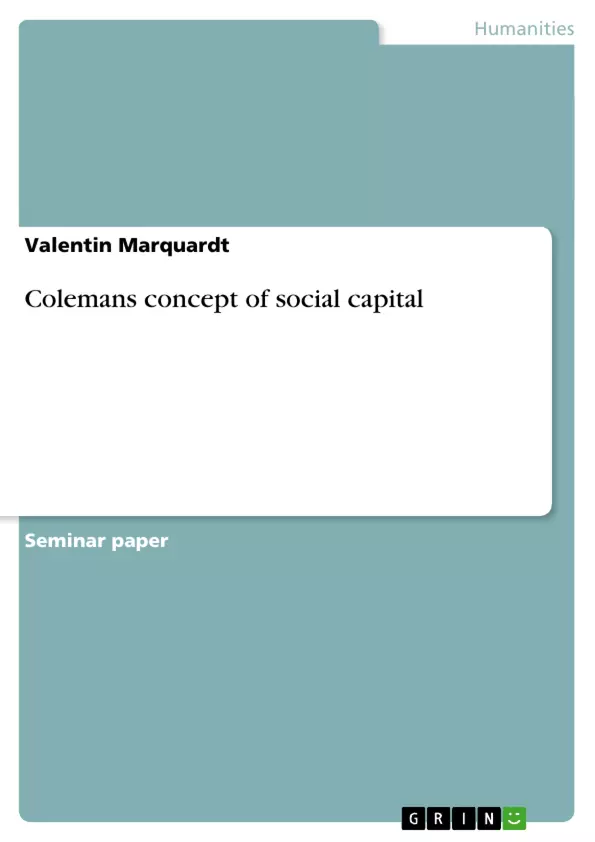In this paper, Coleman’s concept of social capital is introduced and illustrated. Due to a lack of a critical observation concerning negative effects caused by social capital an approach is being made to show that also social capital is not only a source of good.
Inhaltsverzeichnis (Table of Contents)
- Introduction
- Coleman's concept of social capital
- Forms of capital
- Forms of Social Capital
- Realtive quantity of social capital
- Bridging versus Bonding
- The dark side of social capital
- Direct and indirect negative externalities
- Bonding forms of social capital
- Social capital and inequality
- Restrictions inside a network
- Fazit
Zielsetzung und Themenschwerpunkte (Objectives and Key Themes)
This paper aims to introduce and illustrate Coleman's concept of social capital, while simultaneously challenging the predominantly positive connotations associated with it. The author argues that social capital, while beneficial in many ways, can also have negative externalities, particularly for individuals excluded from social relations.
- The concept of social capital as defined by James S. Coleman
- Different forms of capital, including physical, human, and social capital
- The "dark side" of social capital, highlighting negative externalities and inequalities
- The distinction between bridging and bonding forms of social capital
- The role of social capital in networks and its potential for exclusion
Zusammenfassung der Kapitel (Chapter Summaries)
- Introduction: This chapter introduces the concept of social capital and highlights the increasing use of the term in contemporary discourse. It emphasizes the need for clarity in defining social capital due to its varied interpretations and lack of a universally accepted theory.
- Coleman's concept of social capital: This chapter explores Coleman's definition of social capital, emphasizing its dual nature as both a private and public good. It distinguishes social capital from other forms of capital (physical and human) and discusses the public-good aspect of social capital, particularly its inalienability.
Schlüsselwörter (Keywords)
This paper focuses on key concepts such as social capital, rational choice theory, bridging and bonding social capital, negative externalities, inequality, and social networks.
- Quote paper
- Valentin Marquardt (Author), 2007, Colemans concept of social capital, Munich, GRIN Verlag, https://www.grin.com/document/81424



